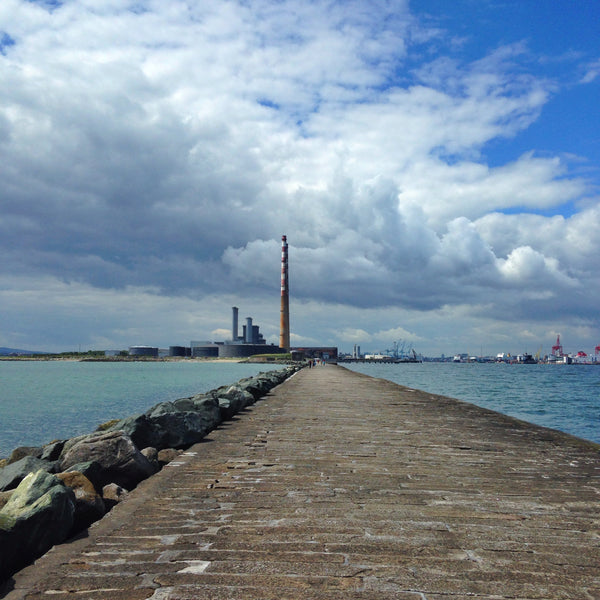Flight of the Pidgeons
Being a Kerry woman myself it’s not too surprising to hear I’m not too well informed on my history of Dublin. We stock a lot of pieces in Irish Design Shop depicting landmarks of Dublin and I noticed much confusion from customers around the name of the iconic Poolbeg Generating Station and its chimneys, with many calling it the Pigeon House. I decided to do a bit of research and set things straight.
A tale of thievery, murder and love in Dublin bay...
The Pigeon House surprisingly wasn’t named after the bird, but was named after John Pidgeon the caretaker of a storehouse used by the builders of the Great South Wall. Completed in 1795, it took nearly 30 years to build the nearly 4 mile long wall, extending out to sea from Dublin Port. From the storehouse John Pidgeon and his family sold food and refreshments to hungry passengers crossing the channel. ‘Pidgeon’s House’ became so popular that John and his son Ned would pick up Dubliners at Ringsend, row them down as far as the Pigeon House for food and drink and then back to the village after.
One night the house came under attack by four men armed with sabres. A fight broke out in which Ned was injured and lost all use of his hand. The thieves took all of the family possessions. The Pidgeon’s were so popular that once word spread of the attack, locals started a collection to reimburse their losses. Some days after the attack John and Ned took their boat out fishing. John’s hook got caught on something, he slowly reeled in the line only to discover it was the body of one of the attackers. A second body was washed ashore a few days later.
The following winter John and his wife passed away leaving Ned and his two sisters to fend for themselves. After Ned’s injury he was unable to row and was forced to hire oarsmen. He caught one of the oarsmen in possession of a knife that had belonged to his father. Ned and another boatsman captured the oarsman and brought the prisoner to Dublin, where he confessed to throwing the two men overboard after a fight broke out over dividing the hoard on the night of the raid.
Ned died soon after, leaving his two sisters to fend for themselves. With no other form of income they decided to row the family boat themselves and bring Dubliners to dine at the Pigeon House. It was unheard of at the time for women to row, so their venture became quite popular amongst the men of Dublin. One wintery October evening the two sisters were waiting for visitors outside their home when all of a sudden a violent storm arose. The sisters took shelter until the storm calmed and noticed something out at sea. They rowed their boat only a short distance out to find two men and a child clinging to a plank. The women rescued them and nursed them back to health. One of the men was the captain of the ship and the other was an American man and his child. His wife had passed away and he was coming to Ireland to place his child in the care of relatives. However, there was a happy ending and he fell in love with one of the sisters, and they made a new life together in America. He even found a wealthy partner for her sister.
(story adapted from The Dublin Penny Journal)

In 1793, after the last of the Pidgeon’s left, the Pigeon House Hotel was constructed to accommodate the increasing cross-channel passenger traffic. It was repurposed as an army barracks in 1798 with the increasing threat of a French invasion. The redbrick power station on the site, the skeleton of which still remains today, began operation in 1903. It was finally decommissioned in 1976. The modern Poolbeg Generating Station and it’s chimneys on a nearby site were completed in 1971 and the famous chimneys puffed their final plume of smoke in 2010. To this day the old buildings of the generating station remain colloquially known as the Pigeon house.


